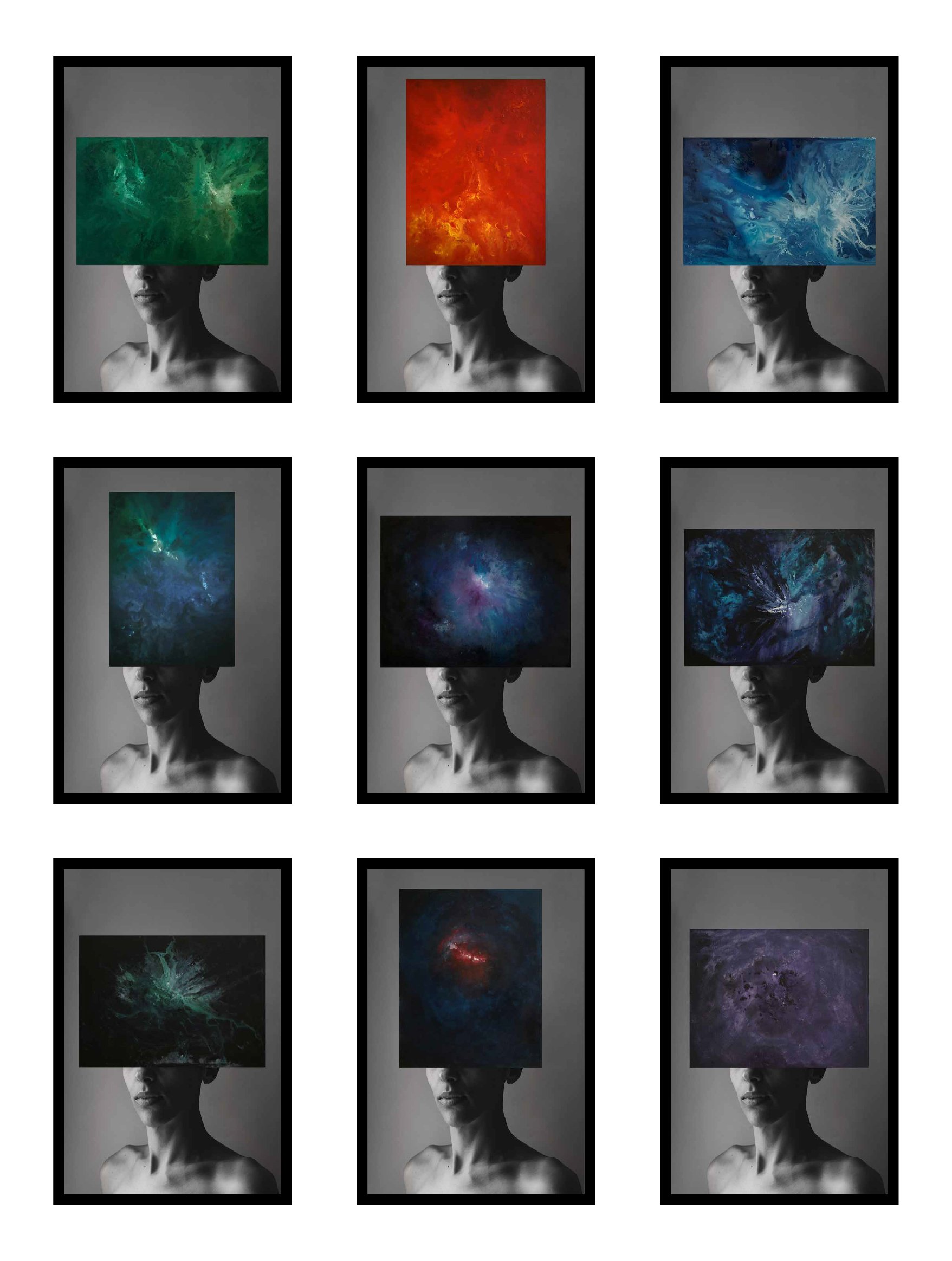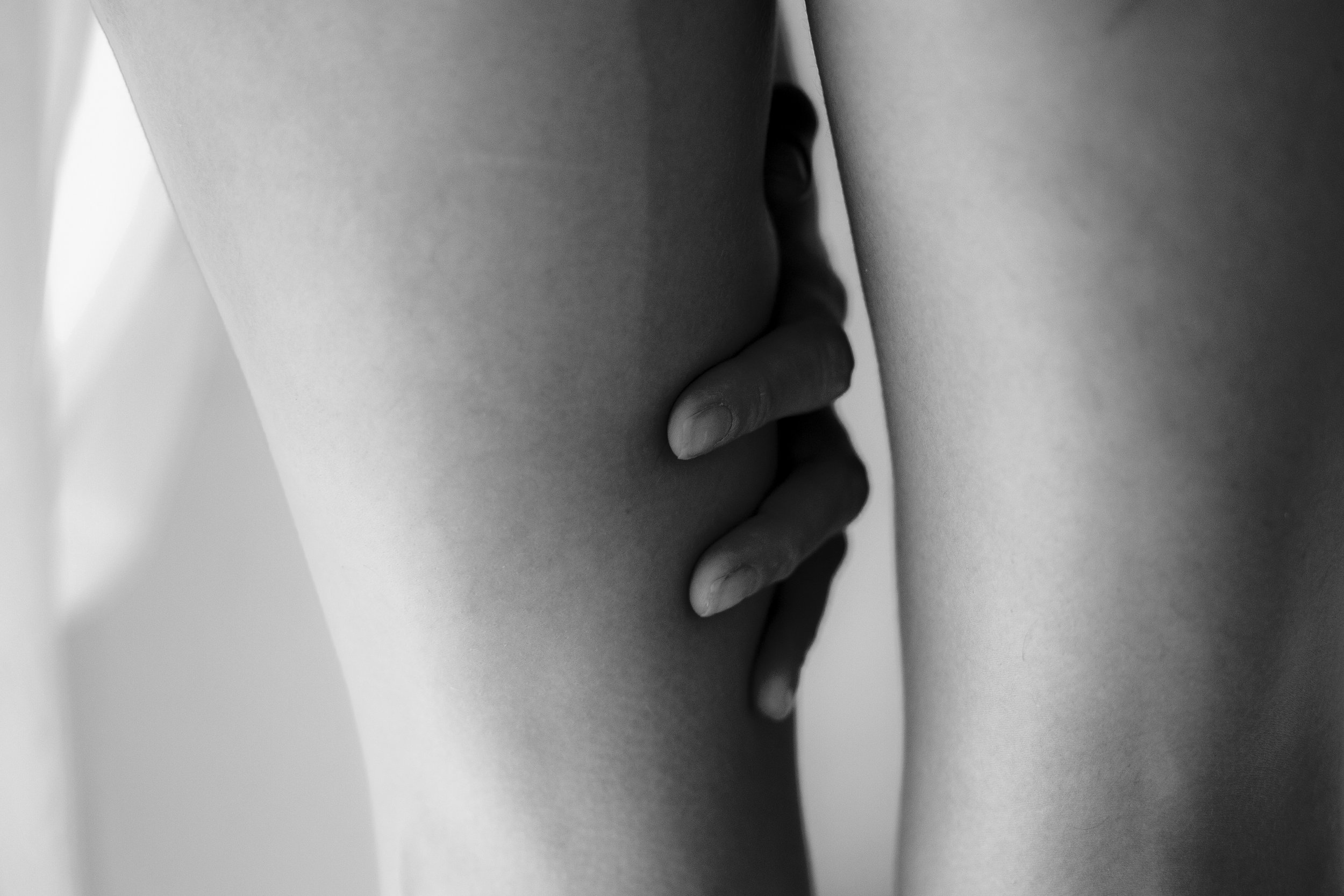Interview with Mercedes Grassi King
Statement
Through the duality between being a passive and active subject, it reveals a dark and dreamlike universe. Her self-portraits, fusing Fine Art and Trash, are an invitation to explore the inner abyss.
Unusual compositions challenge norms, empowering her art. Self-taught, she extracts sidereal images from her melancholic universe, composing pieces that question existence. Her own style, Fine Art Trash, fuses aesthetic elegance with the raw darkness, inherited from Punk, creating striking photographs.
Each image, a piece that challenges norms, immerses the viewer in a sea of contemplations, inciting emotional and intellectual responses. Her art, a visual symphony that screams the chaotic and provocative essence of challenging established norms.
What initially sparked your interest in photography and filmmaking, and how did your early experiences shape your career path?
I think that the interest in Art in general, is something intrinsic to the Being, we are born with this natural inclination towards contemplation. We are all part of it in some way, the work is conceived in a Being that manages to make it real, and ends in another Being that contemplates.
I think I just never stopped listening to these inner feelings of trying to discover the beauty of things; the order in the chaos of nature, the vital drives, the intuition. Everything that does not require logical thinking at first, but rather what captivates you and passes through you, and stops you at a point in which it is impossible to return to what we were before. Like suddenly listening to a song by chance, that moves you and keeps you company at the right moment.
I learned to use the Analog Camera at an early age, due to my mother's love for treasuring moments and protecting the passage of time.
The stories, the tales and the movies were part of the environment that prevailed in my house. Renting movies at the local Video Club was amazing.
Obviously all of this is linked to the fact that in my childhood home, there were always books, music, stories, paintings, photos. And they never tried to indoctrinate children.
Could you describe your creative process when embarking on a new project, particularly in photography? How do you blend technical skills with artistic vision?
There’s two ways to my creative process. The one that generates the most is that of impulse, the inexplicable need to create, that its form corresponds to what happens when I express what I am feeling, letting myself to be captivated by the movement of time in that moment, to be surprised by the result. Discover yourself in the result, whether it is writing, photographing, painting.
The other way is less impulsive, and is to have a clear concept and carry out certain structures to make it happen. It is reflecting on what you want to say, especially when in this case, the execution is with a team.
When I conceive, execute and discover on my own, it is always impulsive. I try not to erase, not to reframe, not to correct. Leave the work as pure as possible, with all its impurities.
How have your studies in editing, scriptwriting, and art direction at UNLP and ENERC influenced your approach to visual storytelling?
They have influenced directly and exponentially, any approach to Art makes us never be the same again.
At the age of 18 I began my film studies, which has a fundamental basis in analog photography. Learning and enjoying the vast number of ways that exist when taking a photograph from different and diverse artistic disciplines. At the public university I acquired knowledge, lived experiences and met people who fed my need to transpolate and mix different art forms, and gave me tools to start doing it.
I must highlight Aida Bortnik, an invaluable artist, with whom I had the pleasure of studying. “Writing Film” was the name of the course, but it truly made you dive into the depths of your being, finding stories, meanings, metaphors in the mundane of life. If you pay attention, any ordinary situation can have extraordinary details
Working on projects like 'Abri Los Ojos' and 'El Problema,' what were some of the most challenging and rewarding aspects of directing these projects?
They were my first two projects as Screenwriter and Director, I fondly remember both processes.
You have a unique approach to self-portraits, using them to express dual perspectives. Can you elaborate on this process and what it reveals about your artistic identity?
The Self-Portraits arose from the idea of seeing something made by me, as if I had not seen it before. Ephemerally existing both in front of and behind the camera, becoming at the same time a passive and active subject of the entire creative process.
It is a succession of changes in perspective, in which I first feel the abysmal soul of the work, to induce me to a deep inner reflection on what is shown; This is also what it's about, cutting out the world, choosing what to expose and what to leave in the imagination behind the frame.
Self-portraits bring to light one's own essence, one's own existence characterized by chaos and the cosmos, by deep sensations and hidden thoughts. I am inspired by the shadowy dream world, the abyss itself, full of stories and melancholy.
I feel that all the people who have made Self-Portraits, in any artistic discipline, were, are and will be looking for answers, which end up generating more questions.
They are always governed by great ambivalence; what is hidden, what is seen, pain and calm, Chaos and Cosmos.
Self-knowledge really arises from the Self-Portraits themselves, once the photograph has been taken, being in front of the Camera, without knowing exactly how it will turn out, beyond the settings, lens, focus, framing, being working with a person, it is Letting yourself be carried away by the organic, which suddenly makes you feel that such a position of hands is the correct one, happens even more when I am the one who gives her body to photograph, with no one to observe. Also the time of development is a time to detach yourself from the work as part of the composition, and continue playing with the discovery.
This is why I consider my photos as Fine Art Trash Works. I consider photography as a work of art, the aesthetics, the sensory, surpass reality, creating an atmosphere of dreaminess. It is about transmitting and expressing feelings, going beyond the literal representation, putting the aesthetic result before the faithful representation of the scene.
You created your own Artistic Concept, could you tell us about it?
Fine Art Trash
This avant-garde concept in my self-portraits arises from the combination of the delicate lines of the silhouettes subtly illuminated, mainly by natural light and an aesthetic elegance typical of Fine Art, with the rawness and heartbreaking darkness that Trash inherited from the Punk movement of the 70’s and 80’s. Not only in specific elements such as t-shirts over my face alluding to emotional suffocation, but also in the general aura of the composition, with an excessiveness and furious expressiveness that characterized the movement. This mixture naturally occurs taking into account the clearly opposite of both currents. Forming photographs so beautifully painful.
Fine Art Trash is a photographic style with a high aesthetic sense. Aesthetics prevail over reality, creating a dreamlike atmosphere. It puts the aesthetic result before the faithful representation of the scene. It involves a creative process in which the Artist develops a concept, creating a dreamlike atmosphere with a strong dark flavor that leads us to understand the world of nightmares embraced by chaos and the cosmos, portraying in a poetic and aesthetic way, the provocative nature and transgressive beauty of breaking established norms, inducing an emotional and intellectual response in the viewer.
We know that you prefer to work with natural light, which implies a challenge as it is an uncontrollable medium or very difficult to control. What attracts you to this type of work and what to look for when using it in your self-portraits?
What attracts me of natural light is its time, its internal tempo. Wait for the ephemeral moment when the light illuminates and draws in the most similar way to what you imagine, and many times it is better.
A series of photos with natural light will never be able to be taken again. It exists in that moment and in the detail of capturing it.
You exhibited in many places around the world, what do you think about the way we see Art today and its scope?
I think the way Art can travel from one continent to another is wonderful.
In the case of photographs, they can be exhibited and seen practically as if the work had traveled. My Visual Art was in countries whose language I do not understand, but Art has only one language and that is great, we have enjoyed it for centuries and we will continue to do so. The Visual Narrative, what is observed, what is hidden, what is shown and what is suggested, play a fundamental role in the contemplation of a photographic work, thus making words superfluous. Enriching communication, relating through emotions, feelings, and fundamentally, Art.



















